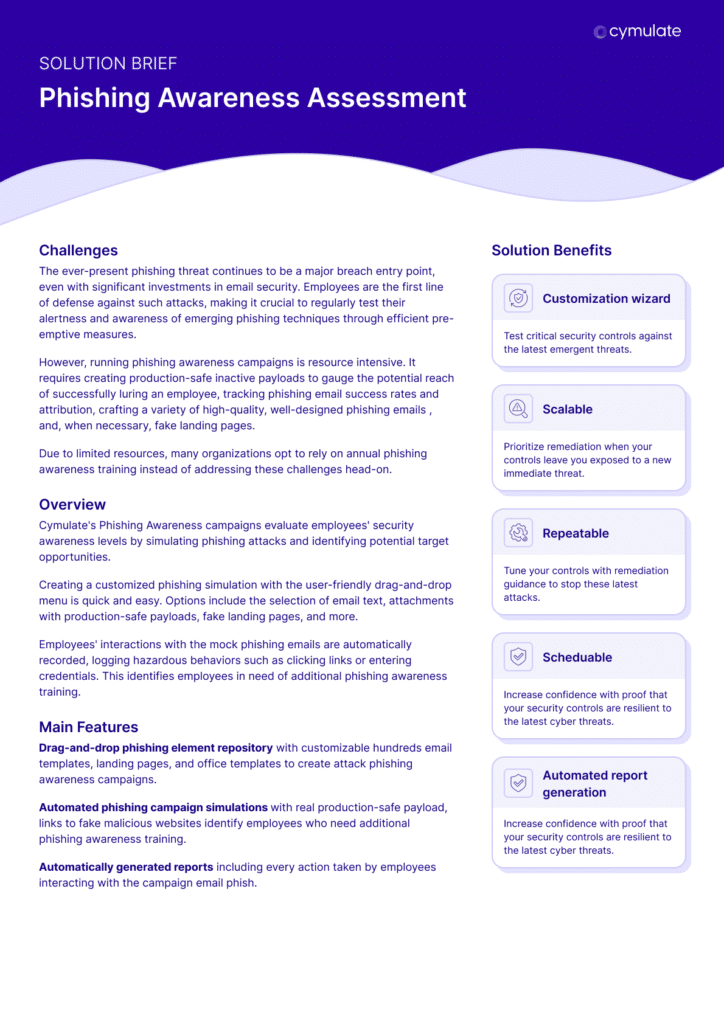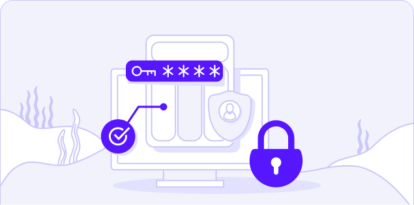Phishing Awareness Assessment
The ever-present phishing threat continues to be a major breach entry point, even with significant investments in email security. Employees are the first line of defense against such attacks, making it crucial to regularly test their alertness and awareness of emerging phishing techniques through efficient pre-emptive measures.
Cymulate's Phishing Awareness campaigns evaluate employees' security awareness levels by simulating phishing attacks and identifying potential target opportunities.
Challenges
The ever-present phishing threat continues to be a major breach entry point, even with significant investments in email security. Employees are the first line of defense against such attacks, making it crucial to regularly test their alertness and awareness of emerging phishing techniques through efficient pre-emptive measures.
However, running phishing awareness campaigns is resource intensive. It requires creating production-safe inactive payloads to gauge the potential reach of successfully luring an employee, tracking phishing email success rates and attribution, crafting a variety of high-quality, well-designed phishing emails , and, when necessary, fake landing pages.
Due to limited resources, many organizations opt to rely on annual phishing awareness training instead of addressing these challenges head-on.
Phishing Awareness Assessment Solution Brief
Learn how Cymulate's Phishing Awareness campaigns evaluate employees' security awareness levels by simulating phishing attacks and identifying potential target opportunities.

Overview
Cymulate's Phishing Awareness campaigns evaluate employees' security awareness levels by simulating phishing attacks and identifying potential target opportunities.
Creating a customized phishing simulation with the user-friendly drag-and-drop menu is quick and easy. Options include the selection of email text, attachments with production-safe payloads, fake landing pages, and more.
Employees' interactions with the mock phishing emails are automatically recorded, logging hazardous behaviors such as clicking links or entering credentials. This identifies employees in need of additional phishing awareness training.


